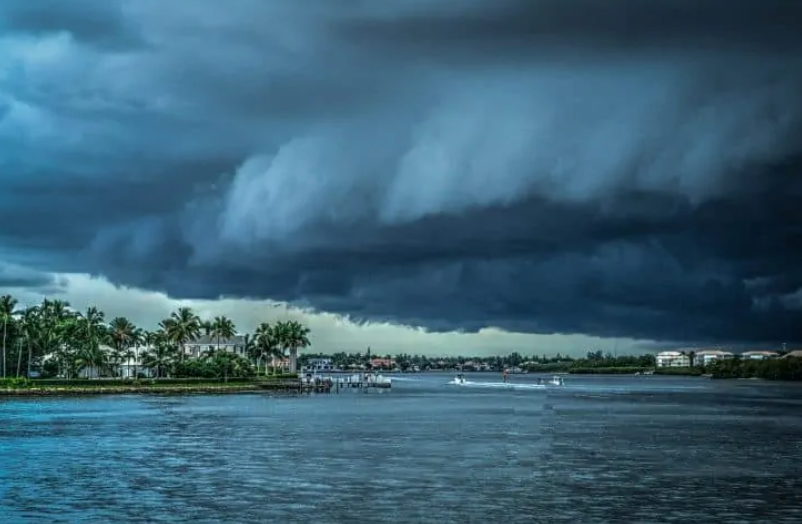
A hurricane’s size can reach up to 600-800 km in diameter.
The size of a hurricane can have a diameter of 600-800 km. It is usually determined by the diameter of a hurricane- and gale-force wind. However, this varies from storm to storm or per category.
The number of hurricanes increased over the years.
There are increasing numbers of Atlantic hurricanes. For example, 2005 was the worst season of the Atlantic hurricanes. Some researchers believe that the number of hurricane rises is due to the natural cycle. The first 30 to 60 years of the cycle are uncommon, while the next 30 to 60 years became more frequent. Many researchers think that global warming is responsible for it.
Hurricanes seem to be “evolving”.
There are incredible distances from hurricanes that hit the United States. Hurricanes start with a huge, complicated butterfly effect that starts over in Africa in the Sahara Desert. Hurricanes seem to be “evolving” as well, as there is an increase in hurricane counts and their strength.
Hurricanes are also described as cyclones and typhoons.
Hurricanes are also described as cyclones and typhoons depending on where they happen. If it’s in the Atlantic and Northwest Pacific Ocean they are hurricanes. In the Northwest Pacific, they are typhoons. If it’s in the South Pacific and the Indian Ocean, they are cyclones.
The Great Galveston Storm is the deadliest hurricane in U.S. in 1900.
Over 100 years ago, a strong hurricane hit Galveston, Texas, United States. The nameless hurricane holds the record for the deadliest hurricane in U.S. history. It caused the death of more than 8,000 people.
The strongest hurricane in the Atlantic is Hurricane Wilma.
Hurricane Wilma is the strongest Atlantic hurricane that has ever recorded, after reaching 882 MBAR in October 2005. This also made Wilma the strongest tropical cyclone around the earth outside of West Pacific.
The difference between tropical depression, tropical storm, and a hurricane is their strength.
Although the scale, strength, and duration of each storm can vary considerably, each storm has to exceed such wind speeds before it becomes a hurricane. It needs to pass through several phases before it gets a name and category.
- Tropical depression — winds reach 60 kilometers per hour.
- Tropical storm — winds reach 60+ kilometers per hour and the storm gets a name.
- Hurricane — winds reach 120 kilometers per hour or more and the hurricane needs to have a category.
There are 5 hurricane categories.
- Category 1: Winds 120 to 152 km/h (Minor damage)
- Category 2: Winds 153 to 177 km/h (Extensive damage — Can uproot trees and break windows)
- Category 3: Winds 178 to 207 km/h (Devastating — Can break windows and doors)
- Category 4: Winds 208 to 251 km/h (Catastrophic damage — Can tear off roofs)
- Category 5: Winds 252 km/h or higher (The absolute worst that can destroy buildings)
There is a difference between a hurricane watch and hurricane warning.
Authorities issue a hurricane watch when they spot a hurricane within 36 hours. They issue a hurricane warning when the same conditions occur within 24 hours.
The longest hurricane lasted for 31 days.
Hurricane/Typhoon John passed through both eastern and western parts of the Pacific Ocean. This lasted for 31 days in 1994, and this is longer than any other hurricane.
The average number of hurricanes per year is 10.
There are about 10 tropical storms per year and about 6 of them transform into a hurricane that develops over the Atlantic Ocean, Caribbean Sea, or the Gulf of Mexico from June to November. Fortunately, most remain over the ocean. However, approximately 5 hurricanes strike the United States coastline every 3 years.
There is a difference between Northern and Southern Hemisphere hurricanes.
When the Hurricane is in the Northern Hemisphere, the winds move counterclockwise around the center. While in the Southern Hemisphere, the winds travel clockwise due to the Coriolis effect. It is the Earth’s rotation that causes this.
Hurricanes can sustain itself for as long as a month.
A typical hurricane lasts between 12 and 24 hours. But like Hurricane John in 1994, it sustained itself for about a month. Hurricane John was the longest-lived hurricane ever noted, detected from the Eastern Pacific to the Western Pacific and for a total of 31 days crossing back to the Central Pacific.
A single hurricane can bring a trillion gallons of water.
Hurricane is a combination of wind and water and a single hurricane can bring trillion gallons of water. Hurricane Harvey poured about 24.5 trillion gallons of water back in September 2017.





